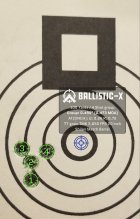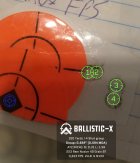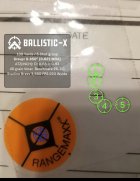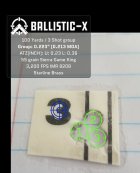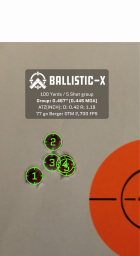Did you call Wayne and talk to him? He says normal runout is .0005. Give him a call
I sent him an email about my initial comparison with the Forster:
“Wayne,
I received my die yesterday. Many thanks for the prompt delivery. I spent quite some time examining, then using the die. I compared cases sized with the Mighty Armory die to cases sized in my Forster Full Length Sizer that had the neck honed by Forster to .288”. Cases sized were all Alpha Munitions, decapped with a Lee universal decapping die, cleaned in my wet tumbler then annealed with my Mike’s Reloading Bench case annealer. I know you say to not use Hornady One Shot case lube, but because that is what I use with my Forster die, I did the same with the Mighty Armory die to keep a level playing field. Both dies were adjusted to bump the shoulders .002”.
As far as machining and finish quality, the Mighty Armory die wins hands down. This is evident in visual appearance of the die itself and evident in the lack of marks left on the brass compared to those left by the Forster. The pressure on my press handle required for sizing with the Mighty Armory die, is noticeably less than that required when using my Forster die.
I measured ten cases from each die for:
Diameter at the shoulder
Neck diameter as sized with the expanders
Runout at the neck.
The Mighty Armory die works the case body less than the Forster die. This is evident because the average shoulder diameter of cases sized in the MA die is .460” compared to .4594” on the cases sized in the Forster. I like that for brass life and closer fit to my rifles’ chambers.
The Mighty Armory die gives a final neck sizing of .291” compared to .2892” from the Forster. This is with expanders installed in both dies. I did size a couple of cases without the expanders in both dies to see how much each die is working the case necks. Without the expander, the Mighty Armory die sized the case necks to .2866” and the Forster die sized them to .2885”. The Mighty Armory die is working the case necks a bit more than the honed Forster die is and provides a little less neck tension.
One thing that caught my eye was how uniform the cases are coming out of the Mighty Armory die. There was no discernible difference in the ten cases measured for diameter at the shoulder and neck diameter. It is very impressive.
When checked for runout at the neck, the Mighty Armory die produced an average runout of .0015” compared to .0006” from the Forster. While I can’t say for certain what the cause of this would be, it has been my experience, that when compared to other dies, the Forster, with its expander being positioned such that the case neck is still supported by the die body when it is being pulled over the expander, has, for me, always produced measurably less runout than other more conventionally designed dies where there is no support of the case neck as it is being pulled over the expander.
My next step will be to load cases sized by both the Mighty Armory and Forster dies and check for runout at the bullet ogive and grouping on paper. Pretty windy here so unable to do that today, but I’ll let you know how that goes as soon as completed.
Thanks for your time, and hope this info is of some use to you.
John”
His response was:
”Excellent information John, by all means
keep me updated. I’m always interested in results.
Thanks for taking the time... I appreciate,
Wayne“
When I loaded ammo with both and measured runout at the ogive, the Forster came out on top. A friend of my son was just getting started reloading so I gave the Mighty Armory to him.
Funny thing though…. I managed to stick a case in my Forster today, and being as hard headed as I am in my efforts to remove the case, I buggered the case beyond removing. Was gonna order another Forster but they were showing available only through back order so I ended up ordering another Mighty Armory -.005 FL sizer, a Redding Body Die, and a Lee Collet die.
John















